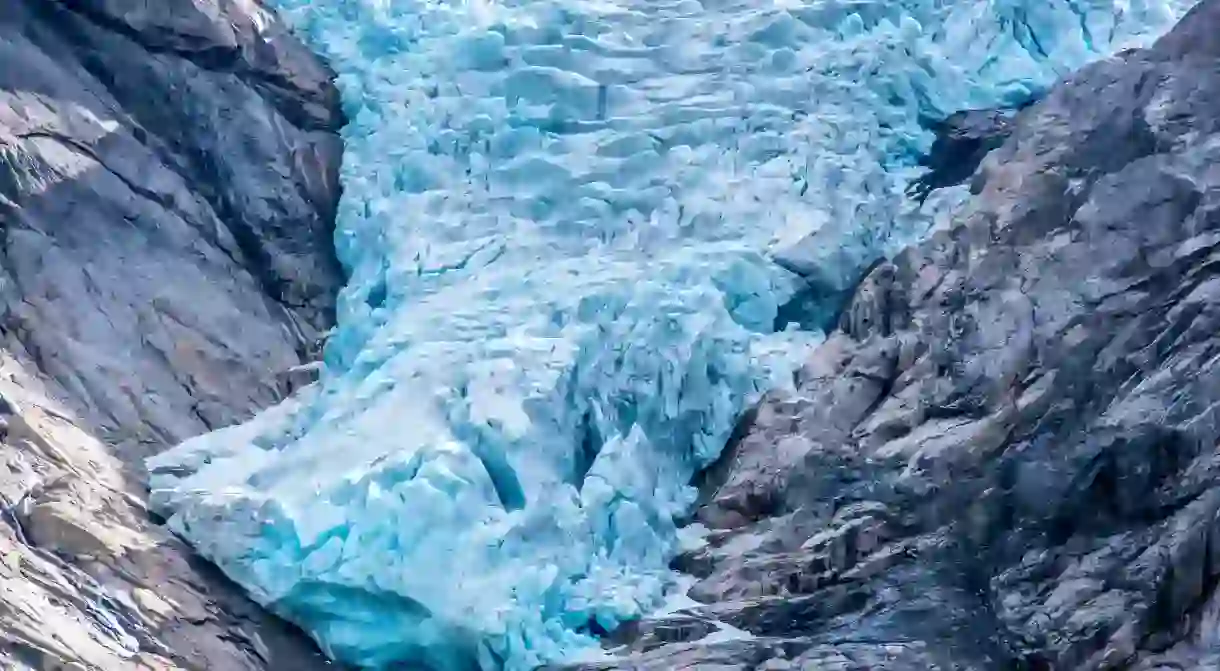A Guide to Glacier Hiking in Norway

Norway is famous for its astounding natural features, and rightfully so. As a nation of nature lovers, Norwegians take full advantage of their gorgeous country; skiing, hiking and blazing trails at all levels of outdoor exploration. Even Oslo is surrounded by beautiful mountain hiking opportunities, though you must go a little further afield to find a glacier.
Norway’s breathtaking fjords and mountains were shaped by massive ice-age ice covers, the last of which fully enveloped the Scandinavian Peninsula 20,000 years ago. The ice could be up to 3km (1.7 mi.) deep and as it withdrew, its weight dramatically changed Norway’s landscape forever. Glaciers, huge areas of compressed snow and ice, tore slowly through the underlying geology, leaving Norway’s famous fjords in their wake. Remnants of the last ice age can still be found in some of Norway’s 44 national parks, where glaciers and ice caps continue their slow crawl through the landscape.
Glacier hiking is one of the best ways to explore this raw wilderness; however, as the glaciers are constantly moving and the ice constantly changing, glacier hiking can be dangerous, and a guide is a must for anyone but the most seasoned explorers. Luckily, many different guided tours are available. Apart from making your trip as safe and comfortable as possible, they are also experts at finding the best spots and can make your trip as informative and unforgettable as can be.

Where to Go
One of the best places to visit is ‘Fjord Norway’ in western Norway (Vestlandet). The home of 11 of the country’s glaciers as well as some of its most beautiful scenery, Fjord Norway also comprises some of the country’s largest and most easily reachable cities, including Bergen, Stavanger and Ålesund, from where it is possible to reach even very remote locations with public transport. One of Fjord Norway’s glaciers, Jostedalsbreen, is the largest glacier on mainland Europe, covering 487km² (188 mi.²). Nordlandet, the area north of western Norway, hosts almost as many, while Svalbard boasts approximately 2,100 glaciers, covering almost 60 per cent of the archipelago, although it is rather more difficult to get to.

A glacier hike encompasses much more than walking on a glacier. Reaching these vast bodies of ice often involves a strenuous hike or navigating a glacial lake by kayak. Occasionally, a motorboat trip can take you there. Needless to say, the trip must be properly prepared for and planned out beforehand. Guides can organise all these things for you, and it is possible to rent or borrow essential equipment such as pick axes and crampons.
Glacier hiking is a fantastic way to get in touch with some of the most magnificent aspects of Norway’s spectacular landscape, and the journey will help shed light on the ways that Norwegian culture has been shaped by its striking, beautiful and, at times, harsh terrain. Just remember that safety should always come first: Find a good guide or guided tour, wear warm and waterproof clothing and prepare for a good workout. Finally, remember to enjoy, breathe in the fresh air and have a fantastic once-in-a-lifetime experience.

What to bring:
Thermal layers – trousers and top
Waterproof hiking trousers, top and jacket with a hood
Waterproof hiking shoes and gloves
Dry clothes – add an extra dry pair just in case
Water bottle – you may be able to refill from the glacial lakes!
Camera
Waterproof bag for belongings
A guide and proper hiking equipment
UV-blocking sunglasses to avoid photokeratitis (snow blindness)














